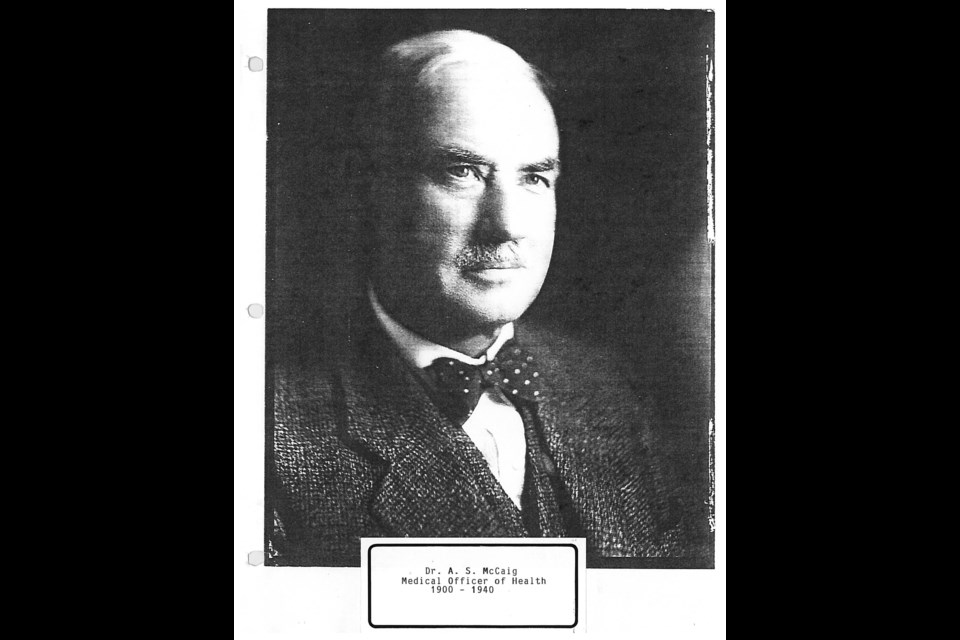As measures to combat the COVID-19 pandemic continue, we bring you this look back at a pandmic from years past. The following is a story on the Spanish Flu that ran originally on Sept. 24, 2017.
From the archives of the Sault Ste. Marie Public Library:
By the time the First World War ended, it was considered to be the deadliest conflict in human history. However casualties often continue to mount due to exposure to the elements, famine and disease.
Towards the end of the war, the Spanish Flu epidemic began to spread across the world killing more people than the war itself. In 1918, the town of Sault Ste. Marie’s population had risen to 21,500 people with the amalgamation of Steelton Township. In September of that year newspapers began to report on hundreds of deaths in Quebec City, Montreal and Boston due to the flu. With the apparent spread of the virus it became apparent that it was only a matter of time before it hit Sault Ste. Marie and the Algoma District soon developed its first case of Spanish Flu. The victim was a young lumberjack who was working 20 miles north of Sault Ste. Marie in Searchmont.
In order to combat the upcoming epidemic, the Board of Health and Medical Officer of Health, Dr. A.S. McCaig were charged with leading the city’s efforts. On Oct. 10, 1918, the Sault Star published a health advisory for the public as the committee’s first step. Within five days, Dr. McCaig announced that there were 16 cases of Spanish Flu in the community. In an attempt to limit the spread of the flu all public meetings were cancelled and ferry service across St. Marys River was suspended. By the 16th of October, the flu had claimed its’ first victim in the city, a man by the name of Luigi D’Ambiosio.
During this time, the Sault Star ran ads for products like Cowan’s Nourishing Cocoa and Fruit-a-tives which were nutritional supplements that claimed to stave off the illness. People’s fears were rising and local drug stores were inundated with people looking for anything to protect themselves. By the end of the first week, 63 cases had been confirmed, with the death of a second individual, a young 14-year-old by the name Ivor Walter Sundstom.
One of the oddities with the disease was that it seemed to affect the young and strong, with no deaths reported in the newspaper of anyone over the age of 38 leading to suggestions that the older generation had been exposed at some earlier point and had built up immunity to the disease. By Oct. 19, the Board of Health had extended its ban on public meetings to include religious services as well. The Board of Health asked for a volunteer corps of nurses and accepted the aid of the Imperial Order Daughters of the Empire.
The Knights of Columbus offered the board the use of their hall at 621 Albert St. E. as a hospital. However, in late October an announcement by Connaught Laboratories of the University of Toronto indicated that they had developed a vaccine and Sault Ste. Marie would receive 200 doses. In November, the disease began to wane and at a special meeting held on Nov. 7 it was reported that there had been 31 deaths. After Nov. 11, 1918, when the war was officially over the Sault saw a spike in 21 new cases, believed to be a result of everyone celebrating the end of the war.
On Nov. 27 the Board of Health began to discuss plans for lifting the ban on public gatherings. In December, it was reasserted that barbers, butchers, millinery and tailor’s shops, bar rooms, candy and cigar stores and all others stores except drug stores must be closed on Saturday evenings. Theatres hired a lawyer, Uriah McFadden, in early December to appear before Council to speak on behalf of the Orpheum, King and Duchess Theatres. He argued that the teachers and clergy were being compensated even though they were closed and pleaded to end the ban but the Board resisted his pleas. On Dec. 9 the Board of Health permitted ferry service to start again, although the Americans were not pleased with this decision since they felt that it put their citizens in danger.
The last reported death attributed to the Spanish Flu occurred on Dec. 10, a 22-year-old woman by the name of August Burmaster. The ban on public gatherings was completely lifted on Dec. 11, 1918, however they waited until the New Year to re-open the schools. There were still a few isolated cases that did arise after this date. Although the worst was over in Sault Ste. Marie, the flu continued in Ontario until the spring of 1919 with a total of 10,000 individuals dying. In 1940, Dr. McCaig referred to the epidemic “as the worst ever to affect the city.”
In a Sault Star article from May 24, 1940, it was estimated that the death toll was 75 out of a total of 255 cases that had been reported. Significantly lower than the national average of one third of populations being affected, Sault Ste. Marie fared much better than other communities.
Despite the hardships (both economically and socially) that people experienced due to the ban, it was believed that the Board of Health’s swift actions and strict protocols are credited for limiting the impact of the epidemic in Sault Ste. Marie, possibly saving the lives of many of its citizens.
Each week, the Sault Ste. Marie Public Library and its Archives provides SooToday readers with a glimpse of the city’s past.
Find out more of what the Public Library has to offer at www.ssmpl.ca and look for more Remember This? columns here
